- Privacy Policy

Home » Table of Contents – Types, Formats, Examples

Table of Contents – Types, Formats, Examples
Table of Contents

Definition:
Table of contents (TOC) is a list of the headings or sections in a document or book, arranged in the order in which they appear. It serves as a roadmap or guide to the contents of the document, allowing readers to quickly find specific information they are looking for.
A typical table of contents includes chapter titles, section headings, subheadings, and their corresponding page numbers.
The table of contents is usually located at the beginning of the document or book, after the title page and any front matter, such as a preface or introduction.
Table of Contents in Research
In Research, A Table of Contents (TOC) is a structured list of the main sections or chapters of a research paper , Thesis and Dissertation . It provides readers with an overview of the organization and structure of the document, allowing them to quickly locate specific information and navigate through the document.
Importance of Table of Contents
Here are some reasons why a TOC is important:
- Navigation : It serves as a roadmap that helps readers navigate the document easily. By providing a clear and concise overview of the contents, readers can quickly locate the section they need to read without having to search through the entire document.
- Organization : A well-structured TOC reflects the organization of the document. It helps to organize the content logically and categorize it into easily digestible chunks, which makes it easier for readers to understand and follow.
- Clarity : It can help to clarify the document’s purpose, scope, and structure. It provides an overview of the document’s main topics and subtopics, which can help readers to understand the content’s overall message.
- Efficiency : This can save readers time and effort by allowing them to skip to the section they need to read, rather than having to go through the entire document.
- Professionalism : Including a Table of Contents in a document shows that the author has taken the time and effort to organize the content properly. It adds a level of professionalism and credibility to the document.
Types of Table of Contents
There are different types of table of contents depending on the purpose and structure of the document. Here are some examples:
Simple Table of Contents
This is a basic table of contents that lists the major sections or chapters of a document along with their corresponding page numbers.
Example: Table of Contents
I. Introduction …………………………………………. 1
II. Literature Review ………………………………… 3
III. Methodology ……………………………………… 6
IV. Results …………………………………………….. 9
V. Discussion …………………………………………. 12
VI. Conclusion ……………………………………….. 15
Expanded Table of Contents
This type of table of contents provides more detailed information about the contents of each section or chapter, including subsections and subheadings.
A. Background …………………………………….. 1
B. Problem Statement ………………………….. 2
C. Research Questions ……………………….. 3
II. Literature Review ………………………………… 5
A. Theoretical Framework …………………… 5
B. Previous Research ………………………….. 6
C. Gaps and Limitations ……………………… 8 I
II. Methodology ……………………………………… 11
A. Research Design ……………………………. 11
B. Data Collection …………………………….. 12
C. Data Analysis ……………………………….. 13
IV. Results …………………………………………….. 15
A. Descriptive Statistics ……………………… 15
B. Hypothesis Testing …………………………. 17
V. Discussion …………………………………………. 20
A. Interpretation of Findings ……………… 20
B. Implications for Practice ………………… 22
VI. Conclusion ……………………………………….. 25
A. Summary of Findings ……………………… 25
B. Contributions and Recommendations ….. 27
Graphic Table of Contents
This type of table of contents uses visual aids, such as icons or images, to represent the different sections or chapters of a document.
I. Introduction …………………………………………. [image of a light bulb]
II. Literature Review ………………………………… [image of a book]
III. Methodology ……………………………………… [image of a microscope]
IV. Results …………………………………………….. [image of a graph]
V. Discussion …………………………………………. [image of a conversation bubble]
Alphabetical Table of Contents
This type of table of contents lists the different topics or keywords in alphabetical order, along with their corresponding page numbers.
A. Abstract ……………………………………………… 1
B. Background …………………………………………. 3
C. Conclusion …………………………………………. 10
D. Data Analysis …………………………………….. 8
E. Ethics ……………………………………………….. 6
F. Findings ……………………………………………… 7
G. Introduction ……………………………………….. 1
H. Hypothesis ………………………………………….. 5
I. Literature Review ………………………………… 2
J. Methodology ……………………………………… 4
K. Limitations …………………………………………. 9
L. Results ………………………………………………… 7
M. Discussion …………………………………………. 10
Hierarchical Table of Contents
This type of table of contents displays the different levels of headings and subheadings in a hierarchical order, indicating the relative importance and relationship between the different sections.
A. Background …………………………………….. 2
B. Purpose of the Study ……………………….. 3
A. Theoretical Framework …………………… 5
1. Concept A ……………………………….. 6
a. Definition ………………………….. 6
b. Example ……………………………. 7
2. Concept B ……………………………….. 8
B. Previous Research ………………………….. 9
III. Methodology ……………………………………… 12
A. Research Design ……………………………. 12
1. Sample ……………………………………. 13
2. Procedure ………………………………. 14
B. Data Collection …………………………….. 15
1. Instrumentation ……………………….. 16
2. Validity and Reliability ………………. 17
C. Data Analysis ……………………………….. 18
1. Descriptive Statistics …………………… 19
2. Inferential Statistics ………………….. 20
IV. Result s …………………………………………….. 22
A. Overview of Findings ……………………… 22
B. Hypothesis Testing …………………………. 23
V. Discussion …………………………………………. 26
A. Interpretation of Findings ………………… 26
B. Implications for Practice ………………… 28
VI. Conclusion ……………………………………….. 31
A. Summary of Findings ……………………… 31
B. Contributions and Recommendations ….. 33
Table of Contents Format
Here’s an example format for a Table of Contents:
I. Introduction
C. Methodology
II. Background
A. Historical Context
B. Literature Review
III. Methodology
A. Research Design
B. Data Collection
C. Data Analysis
IV. Results
A. Descriptive Statistics
B. Inferential Statistics
C. Qualitative Findings
V. Discussion
A. Interpretation of Results
B. Implications for Practice
C. Limitations and Future Research
VI. Conclusion
A. Summary of Findings
B. Contributions to the Field
C. Final Remarks
VII. References
VIII. Appendices
Note : This is just an example format and can vary depending on the type of document or research paper you are writing.
When to use Table of Contents
A TOC can be particularly useful in the following cases:
- Lengthy documents : If the document is lengthy, with several sections and subsections, a Table of contents can help readers quickly navigate the document and find the relevant information.
- Complex documents: If the document is complex, with multiple topics or themes, a TOC can help readers understand the relationships between the different sections and how they are connected.
- Technical documents: If the document is technical, with a lot of jargon or specialized terminology, This can help readers understand the organization of the document and locate the information they need.
- Legal documents: If the document is a legal document, such as a contract or a legal brief, It helps readers quickly locate specific sections or provisions.
How to Make a Table of Contents
Here are the steps to create a table of contents:
- Organize your document: Before you start making a table of contents, organize your document into sections and subsections. Each section should have a clear and descriptive heading that summarizes the content.
- Add heading styles : Use the heading styles in your word processor to format the headings in your document. The heading styles are usually named Heading 1, Heading 2, Heading 3, and so on. Apply the appropriate heading style to each section heading in your document.
- Insert a table of contents: Once you’ve added headings to your document, you can insert a table of contents. In Microsoft Word, go to the References tab, click on Table of Contents, and choose a style from the list. The table of contents will be inserted into your document.
- Update the table of contents: If you make changes to your document, such as adding or deleting sections, you’ll need to update the table of contents. In Microsoft Word, right-click on the table of contents and select Update Field. Choose whether you want to update the page numbers or the entire table, and click OK.
Purpose of Table of Contents
A table of contents (TOC) serves several purposes, including:
- Marketing : It can be used as a marketing tool to entice readers to read a book or document. By highlighting the most interesting or compelling sections, a TOC can give readers a preview of what’s to come and encourage them to dive deeper into the content.
- Accessibility : A TOC can make a document or book more accessible to people with disabilities, such as those who use screen readers or other assistive technologies. By providing a clear and organized overview of the content, a TOC can help these readers navigate the material more easily.
- Collaboration : This can be used as a collaboration tool to help multiple authors or editors work together on a document or book. By providing a shared framework for organizing the content, a TOC can help ensure that everyone is on the same page and working towards the same goals.
- Reference : It can serve as a reference tool for readers who need to revisit specific sections of a document or book. By providing a clear overview of the content and organization, a TOC can help readers quickly locate the information they need, even if they don’t remember exactly where it was located.
About the author
Muhammad Hassan
Researcher, Academic Writer, Web developer
You may also like

Research Paper Outline – Types, Example, Template

Ethical Considerations – Types, Examples and...

Background of The Study – Examples and Writing...

Appendices – Writing Guide, Types and Examples

Research Paper Abstract – Writing Guide and...

Critical Analysis – Types, Examples and Writing...
- Link to facebook
- Link to linkedin
- Link to twitter
- Link to youtube
- Writing Tips
How to Structure the Table of Contents for a Research Paper

4-minute read
- 16th July 2023
So you’ve made it to the important step of writing the table of contents for your paper. Congratulations on making it this far! Whether you’re writing a research paper or a dissertation , the table of contents not only provides the reader with guidance on where to find the sections of your paper, but it also signals that a quality piece of research is to follow. Here, we will provide detailed instructions on how to structure the table of contents for your research paper.
Steps to Create a Table of Contents
- Insert the table of contents after the title page.
Within the structure of your research paper , you should place the table of contents after the title page but before the introduction or the beginning of the content. If your research paper includes an abstract or an acknowledgements section , place the table of contents after it.
- List all the paper’s sections and subsections in chronological order.
Depending on the complexity of your paper, this list will include chapters (first-level headings), chapter sections (second-level headings), and perhaps subsections (third-level headings). If you have a chapter outline , it will come in handy during this step. You should include the bibliography and all appendices in your table of contents. If you have more than a few charts and figures (more often the case in a dissertation than in a research paper), you should add them to a separate list of charts and figures that immediately follows the table of contents. (Check out our FAQs below for additional guidance on items that should not be in your table of contents.)
- Paginate each section.
Label each section and subsection with the page number it begins on. Be sure to do a check after you’ve made your final edits to ensure that you don’t need to update the page numbers.
- Format your table of contents.
The way you format your table of contents will depend on the style guide you use for the rest of your paper. For example, there are table of contents formatting guidelines for Turabian/Chicago and MLA styles, and although the APA recommends checking with your instructor for formatting instructions (always a good rule of thumb), you can also create a table of contents for a research paper that follows APA style .
- Add hyperlinks if you like.
Depending on the word processing software you’re using, you may also be able to hyperlink the sections of your table of contents for easier navigation through your paper. (Instructions for this feature are available for both Microsoft Word and Google Docs .)
To summarize, the following steps will help you create a clear and concise table of contents to guide readers through your research paper:
1. Insert the table of contents after the title page.
2. List all the sections and subsections in chronological order.
3. Paginate each section.
4. Format the table of contents according to your style guide.
5. Add optional hyperlinks.
If you’d like help formatting and proofreading your research paper , check out some of our services. You can even submit a sample for free . Best of luck writing your research paper table of contents!
What is a table of contents?
A table of contents is a listing of each section of a document in chronological order, accompanied by the page number where the section begins. A table of contents gives the reader an overview of the contents of a document, as well as providing guidance on where to find each section.
Find this useful?
Subscribe to our newsletter and get writing tips from our editors straight to your inbox.
What should I include in my table of contents?
If your paper contains any of the following sections, they should be included in your table of contents:
● Chapters, chapter sections, and subsections
● Introduction
● Conclusion
● Appendices
● Bibliography
Although recommendations may differ among institutions, you generally should not include the following in your table of contents:
● Title page
● Abstract
● Acknowledgements
● Forward or preface
If you have several charts, figures, or tables, consider creating a separate list for them that will immediately follow the table of contents. Also, you don’t need to include the table of contents itself in your table of contents.
Is there more than one way to format a table of contents?
Yes! In addition to following any recommendations from your instructor or institution, you should follow the stipulations of your style guide .
Share this article:
Post A New Comment
Got content that needs a quick turnaround? Let us polish your work. Explore our editorial business services.
9-minute read
How to Use Infographics to Boost Your Presentation
Is your content getting noticed? Capturing and maintaining an audience’s attention is a challenge when...
8-minute read
Why Interactive PDFs Are Better for Engagement
Are you looking to enhance engagement and captivate your audience through your professional documents? Interactive...
7-minute read
Seven Key Strategies for Voice Search Optimization
Voice search optimization is rapidly shaping the digital landscape, requiring content professionals to adapt their...
Five Creative Ways to Showcase Your Digital Portfolio
Are you a creative freelancer looking to make a lasting impression on potential clients or...
How to Ace Slack Messaging for Contractors and Freelancers
Effective professional communication is an important skill for contractors and freelancers navigating remote work environments....
3-minute read
How to Insert a Text Box in a Google Doc
Google Docs is a powerful collaborative tool, and mastering its features can significantly enhance your...

Make sure your writing is the best it can be with our expert English proofreading and editing.
Have a language expert improve your writing
Run a free plagiarism check in 10 minutes, automatically generate references for free.
- Knowledge Base
- Dissertation
- Dissertation Table of Contents in Word | Instructions & Examples
Dissertation Table of Contents in Word | Instructions & Examples
Published on 15 May 2022 by Tegan George .
The table of contents is where you list the chapters and major sections of your thesis, dissertation, or research paper, alongside their page numbers. A clear and well-formatted table of contents is essential, as it demonstrates to your reader that a quality paper will follow.
The table of contents (TOC) should be placed between the abstract and the introduction. The maximum length should be two pages. Depending on the nature of your thesis, dissertation, or paper, there are a few formatting options you can choose from.
Download Word doc Download Google doc
Instantly correct all language mistakes in your text
Be assured that you'll submit flawless writing. Upload your document to correct all your mistakes.

Table of contents
What to include in your table of contents, what not to include in your table of contents, creating a table of contents in microsoft word, table of contents examples, updating a table of contents in microsoft word, other lists in your thesis, dissertation, or research paper, frequently asked questions about the table of contents.
Depending on the length of your document, you can choose between a single-level, subdivided, or multi-level table of contents.
- A single-level table of contents only includes ‘level 1’ headings, or chapters. This is the simplest option, but it may be too broad for a long document like a dissertation.
- A subdivided table of contents includes chapters as well as ‘level 2’ headings, or sections. These show your reader what each chapter contains.
- A multi-level table of contents also further divides sections into ‘level 3’ headings. This option can get messy quickly, so proceed with caution. Remember your table of contents should not be longer than 2 pages. A multi-level table is often a good choice for a shorter document like a research paper.
Examples of level 1 headings are Introduction, Literature Review, Methodology, and Bibliography. Subsections of each of these would be level 2 headings, further describing the contents of each chapter or large section. Any further subsections would be level 3.
In these introductory sections, less is often more. As you decide which sections to include, narrow it down to only the most essential.
Including appendices and tables
You should include all appendices in your table of contents. Whether or not you include tables and figures depends largely on how many there are in your document.
If there are more than three figures and tables, you might consider listing them on a separate page. Otherwise, you can include each one in the table of contents.
- Theses and dissertations often have a separate list of figures and tables.
- Research papers generally don’t have a separate list of figures and tables.
Prevent plagiarism, run a free check.
All level 1 and level 2 headings should be included in your table of contents, with level 3 headings used very sparingly.
The following things should never be included in a table of contents:
- Your acknowledgements page
- Your abstract
- The table of contents itself
The acknowledgements and abstract always precede the table of contents, so there’s no need to include them. This goes for any sections that precede the table of contents.
To automatically insert a table of contents in Microsoft Word, be sure to first apply the correct heading styles throughout the document, as shown below.
- Choose which headings are heading 1 and which are heading 2 (or 3!
- For example, if all level 1 headings should be Times New Roman, 12-point font, and bold, add this formatting to the first level 1 heading.
- Highlight the level 1 heading.
- Right-click the style that says ‘Heading 1’.
- Select ‘Update Heading 1 to Match Selection’.
- Allocate the formatting for each heading throughout your document by highlighting the heading in question and clicking the style you wish to apply.
Once that’s all set, follow these steps:
- Add a title to your table of contents. Be sure to check if your citation style or university has guidelines for this.
- Place your cursor where you would like your table of contents to go.
- In the ‘References’ section at the top, locate the Table of Contents group.
- Here, you can select which levels of headings you would like to include. You can also make manual adjustments to each level by clicking the Modify button.
- When you are ready to insert the table of contents, click ‘OK’ and it will be automatically generated, as shown below.
The key features of a table of contents are:
- Clear headings and subheadings
- Corresponding page numbers
Check with your educational institution to see if they have any specific formatting or design requirements.
The only proofreading tool specialized in correcting academic writing
The academic proofreading tool has been trained on 1000s of academic texts and by native English editors. Making it the most accurate and reliable proofreading tool for students.

Correct my document today
Write yourself a reminder to update your table of contents as one of your final tasks before submitting your dissertation or paper. It’s normal for your text to shift a bit as you input your final edits, and it’s crucial that your page numbers correspond correctly.
It’s easy to update your page numbers automatically in Microsoft Word. Simply right-click the table of contents and select ‘Update Field’. You can choose either to update page numbers only or to update all information in your table of contents.
In addition to a table of contents, you might also want to include a list of figures and tables, a list of abbreviations and a glossary in your thesis or dissertation. You can use the following guides to do so:
- List of figures and tables
- List of abbreviations
It is less common to include these lists in a research paper.
All level 1 and 2 headings should be included in your table of contents . That means the titles of your chapters and the main sections within them.
The contents should also include all appendices and the lists of tables and figures, if applicable, as well as your reference list .
Do not include the acknowledgements or abstract in the table of contents.
To automatically insert a table of contents in Microsoft Word, follow these steps:
- Apply heading styles throughout the document.
- In the references section in the ribbon, locate the Table of Contents group.
- Click the arrow next to the Table of Contents icon and select Custom Table of Contents.
- Select which levels of headings you would like to include in the table of contents.
Make sure to update your table of contents if you move text or change headings. To update, simply right click and select Update Field.
The table of contents in a thesis or dissertation always goes between your abstract and your introduction.
Cite this Scribbr article
If you want to cite this source, you can copy and paste the citation or click the ‘Cite this Scribbr article’ button to automatically add the citation to our free Reference Generator.
George, T. (2022, May 15). Dissertation Table of Contents in Word | Instructions & Examples. Scribbr. Retrieved 18 June 2024, from https://www.scribbr.co.uk/thesis-dissertation/contents-page/
Is this article helpful?
Tegan George
Other students also liked, dissertation title page, how to write an abstract | steps & examples, thesis & dissertation acknowledgements | tips & examples.
- Bipolar Disorder
- Therapy Center
- When To See a Therapist
- Types of Therapy
- Best Online Therapy
- Best Couples Therapy
- Best Family Therapy
- Managing Stress
- Sleep and Dreaming
- Understanding Emotions
- Self-Improvement
- Healthy Relationships
- Student Resources
- Personality Types
- Guided Meditations
- Verywell Mind Insights
- 2024 Verywell Mind 25
- Mental Health in the Classroom
- Editorial Process
- Meet Our Review Board
- Crisis Support
A Table of Contents in APA Format
Kendra Cherry, MS, is a psychosocial rehabilitation specialist, psychology educator, and author of the "Everything Psychology Book."
:max_bytes(150000):strip_icc():format(webp)/IMG_9791-89504ab694d54b66bbd72cb84ffb860e.jpg)
Adah Chung is a fact checker, writer, researcher, and occupational therapist.
:max_bytes(150000):strip_icc():format(webp)/Adah-Chung-1000-df54540455394e3ab797f6fce238d785.jpg)
General Guidelines
- Table of Contents
APA style does not require a table of contents, but there are cases where you may need to include one. For example, your instructor may specify that your paper must be submitted with a table of contents. A table of contents can be particularly helpful in cases where your paper is lengthy or covers a lot of material, such as a thesis paper or dissertation. Research papers, in particular, may benefit from the addition of a table of contents.
APA style is the official publication style of the American Psychological Association. APA style is used in psychology courses as well as other social science classes including those in social science, behavioral sciences, and education.
The table of contents serves as a basic roadmap of your paper. It should list all of the major headings and subheadings within the body of your paper. For a standard psychology paper, it might include listings for the introduction, method, results, and discussion sections of your paper.
While the APA may not specify guidelines for a table of contents, you should use the basic APA format for formatting your table of contents:
- Use one-inch margins on all sides
- Use 12-point Times New Roman font
- Double-space
Since APA does not require a table of contents, you should always refer to your instructor’s guidelines when deciding whether or not to include one.
It is also important to note that the 7th edition of the Publication Manual of the American Psychological Association was published in 2020, and included updated guidelines on many topics.
For example, while the previous edition of the style manual required a running head on each page of a paper, the 7th edition has eliminated that requirement on student papers unless your instructor specifies to include it. Always ask first.
If you are using a standard APA paper format, your table of contents should include the following sections:
- Introduction
The above format may work well for a standard lab report or research paper. However, your table of contents will look much different if you are writing something such as a critique, essay, or case study.
Notice, that the table of contents does not include the abstract or acknowledgments pages. When applicable, it should list the appendices and the lists of tables and figures.
The exact order of your paper depends largely on the type of paper you are writing. In general, your paper should be presented in the following order:
- Main Body of Paper
Table of Contents Format
Because there is no standard format for a table of contents in APA style, you should always defer to the provided guidelines for your assignment.
If your instructor does not have a preferred format, consider using the following:
- Title the page “Table of Contents” and center the title at the top of the page.
- Most papers should include at least two levels of headings, up to five levels.
- Level one headings will be for main topics, such as chapter titles like "Chapter One; Name of Chapter," or research sections like "Method," "Results," and "Discussion."
- All level-one headings should be flush-left and sub-headings should be indented five spaces deeper than the last.
- All heading levels should be in title case, capitalizing the first letter of each word. The font type, style, and size stay the same for each level.
- The page number for each heading is formatted flush-right. Include dot leaders between the headings and the page number to improve readability.
While you might not think that following APA format is important, it is one of those areas where students can lose points for making small errors. It pays to spend a little extra time and attention making sure that your paper is formatted in proper APA style.
- If you need help, you can get assistance from your school's writing lab.
- Getting your own copy of the latest edition of the APA publication manual can be very helpful.
- Always refer to any instructions or guidelines that were provided by your course instructor.
- There is a helpful feature in most word processors that you can use to pre-format your paper in APA style. It takes a little effort to set it up, but well worth it in the end, especially for longer documents. You can save the style to apply to your future papers saving you the effort next time.
For those writing a paper to submit for publication, check with the publisher for any specific formatting requirements that they may have.
American Psychological Association. Publication Manual of the American Psychological Association (7th ed.) ; 2020.
By Kendra Cherry, MSEd Kendra Cherry, MS, is a psychosocial rehabilitation specialist, psychology educator, and author of the "Everything Psychology Book."
Table of Contents: Guidelines for an A+ Dissertation
- Icon Calendar 19 June 2024
- Icon Page 984 words
- Icon Clock 6 min read
Rules that guide academic writing are specific to each paper format. However, some rules apply to all styles – APA, MLA, Chicago/Turabian, and Harvard. Basically, one of these rules is the inclusion of a table of contents (TOC) in an academic text, particularly long ones, like theses, dissertations, and research papers. Before starting a TOC, students or researchers should observe some practices regardless of different paper formats. Moreover, the process includes putting a particular TOC on a new page after the title page, numbering the first-level and corresponding second-level headings, and indicating the page number of each entry. Hence, scholars need to learn how to write a good table of contents in APA, MLA, Chicago/Turabian, and Harvard styles.
General Guidelines
When organizing academic texts, such as theses, dissertations, and other research papers, students observe academic writing rules as applicable. Generally, the different paper formats – APA, MLA, Chicago/Turabian, and Harvard – have specific standards that students must follow strictly. In this case, one of the rules is the inclusion of a table of contents (TOC) in the document. By definition, a TOC is a roadmap that scholars provide in their composition, outlining each portion of a paper. In other words, it enables readers to locate specific information in documents or revisit favorite parts within completed texts. To make a good table of contents, writers ensure it is accurate, consistently formatted, clearly organized with proper headings and subheadings, and includes correct page numbers for all major sections and subsections. Moreover, this part of academic papers provides readers with a preview of the document’s text.
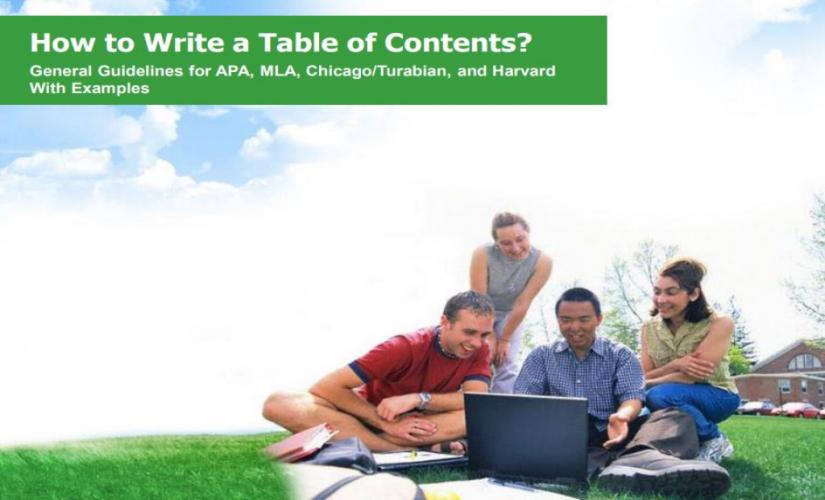
What Is a Table of Contents and Its Purpose
According to its definition, a table of contents (TOC) is a structured list that can be found at the beginning of books, reports, or other documents and provides key details on their chapters, sections, and major topics, along with their corresponding page numbers. The main purpose of writing a table of contents is to provide a clear and organized overview of a document’s text and help readers to understand its organization and flow of a material, making it easy to navigate (Heard, 2022). In this case, writers place their table of contents immediately after the title page and acknowledgments but before the main body of an entire work. Moreover, in lengthy or complex compositions, such as essays, research papers, theses, or dissertations, scholars often need to reference only specific information without reading them (Lewis et al., 2021). To achieve this purpose, they review a TOC page of a particular work under analysis and efficiently access the parts they need. Overall, a well-designed table of contents significantly improves the reader’s experience by providing a valid roadmap to a particular document’s text (Stadtlander, 2022). Besides, a dissertation table of contents should include all major sections, such as the introduction, literature review, methodology, results, discussion, conclusion, references, and appendices, along with their respective subsections and corresponding page numbers. In turn, here is an example template for writing a dissertation table of contents:
Difference Between a Table of Contents and an Outline
In essence, a TOC is a description of first-level headings (topics) and second-level headings (subtopics) within the paper’s body. For a longer document, writers may also include third-level titles to make the text good to read. To create a table of contents in Word, writers use the “References” tab to select “Table of Contents” and choose a style, ensuring that their document’s headings are formatted with the appropriate heading styles. Ideally, the length of papers determines the depth that authors go into detailing their writing in TOCs. For example, popular table of contents designs include hierarchical lists with indented subsections, dot leaders connecting titles to page numbers, and clear, consistent formatting with bold or italicized headings to distinguish different levels (Fitzpatrick, 2021). Basically, this feature means that shorter texts may not require third-level headings. In contrast, an essay outline is a summary of the paper’s main ideas with a hierarchical or logical structuring of the text. Unlike a TOC that only lists headings and subheadings, outlines capture these headings and then describe a written composition briefly under each one. As such, an outline provides a more in-depth summary of essay papers compared to a TOC.
| Criteria | Rule |
|---|---|
| Font and Style | Use a readable font (e.g., Times New Roman, Arial, Calibri) and a consistent font size (12-point). Use bold or italics sparingly for section titles. |
| Alignment and Indentation | Left-align main headings. Indent subsections to reflect hierarchy (e.g., 0.5 inches for each level). |
| Spacing | Single or 1.5 line spacing within entries. Double space between major sections. |
| Capitalization | Use title case (capitalize major words) for section titles. Ensure consistent capitalization style. |
| Page Numbers | Align page numbers to the right margin. Use dot leaders to connect section titles to page numbers. |
| Headings and Subheadings | Distinguish different levels of headings (e.g., main headings in bold, subheadings in regular font). Use numbering for chapters and sections (e.g., 1. Introduction, 1.1 Background). |
| Consistency | Apply formatting rules consistently throughout an entire TOC. Ensure formatting matches the rest of the document. |
| Lists of Figures and Tables | Follow same formatting rules as a main TOC. Place these lists immediately after a TOC page. |
| Margins | Use standard document margins (e.g., 1-inch margins on all sides). Ensure it fits within margins without overcrowding. |
| Templates and Styles | Use predefined styles or templates to ensure consistency. Adjust styles as necessary for specific requirements. |
- Easing a Document Navigation: Allows readers to quickly locate specific sections or chapters without having to search through an entire work.
- Providing an Overview: Offers a clear and structured outline of a paper’s text, helping readers understand the scope and organization at first glance.
- Improving Readability: Breaks down a written document into manageable sections, helping readers to follow and comprehend its content.
- Promoting Easy Reference: Enables readers to reference specific parts of a document easily, which is particularly useful for lengthy works, like dissertations, reports, or manuals.
- Making a Professional Presentation: Adds a level of professionalism and polish to a completed work, demonstrating attention to detail and careful organization.
- Aiding in Document Structuring: Helps writers to organize their thoughts and structure their papers logically, ensuring a coherent flow of information.
- Saving Time: Saves readers time by providing direct access to the sections they are interested in, improving overall efficiency.
- Supporting Academic and Technical Standards: Meets the requirements of academic and technical writing standards, which often mandate a TOC for comprehensive documents.
- Facilitating Review and Editing: Assists reviewers and editors in navigating a completed paper quickly, making the review and editing process more efficient.
- Enhancing Accessibility: Makes an entire document more accessible to a wider audience, including those who may need to find information quickly for research or reference purposes.
General Format
| Section | Description |
|---|---|
| Title Page | The title of an entire document with an author, institution, and date. |
| Abstract | A brief summary of a document’s content. |
| Acknowledgments | Section to thank those who helped in the creation of this document. |
| Table of Contents | A list including all sections and subsections with page numbers. |
| List of Figures or Illustrations | A list covering all figures in this document with page numbers. |
| List of Tables | A list presenting all tables in this document with page numbers. |
| List of Abbreviations | Definitions of abbreviations used in this document. |
| List of Symbols | Descriptions of symbols used in this document. |
| Chapters and Sections | The paper’s main content organized as chapters and sections. |
| Introduction | Overview, research problem, objectives, and significance. |
| Literature Review | Summary of existing research related to a study topic. |
| Methodology | Methods used for research, including data collection and analysis. |
| Results | Presentation and analysis of research findings. |
| Discussion | Interpretation of results, implications, and comparison with existing literature. |
| Conclusion and Recommendations | Summary of findings, conclusions drawn, and suggestions for future research. |
| Reference List | A list acknowledging all sources cited in a finished document and according to APA, MLA, Chicago/Turabian, Harvard, or other referencing formats. |
| Appendices | Additional materials, such as surveys, detailed data, and supplementary information. |
How to Write a Table of Contents in APA
When writing a TOC in the APA format, writers should capture all the headings in the paper – first-level, second-level, and even third-level. Besides this information, they should also include an abstract, references, and appendices. The correct way to format a table of contents is to list all main sections and subsections in a logical order, use clear and consistent headings, indent subsections, align page numbers to the right with dot leaders connecting the titles to them, and ensure it matches the overall document style and layout (Lang, 2017). Notably, while a TOC in the APA style has an abstract, this section is not necessary for the other formats, like MLA, Chicago/Turabian, and Harvard. Hence, an example of a TOC written in APA format is indicated below:
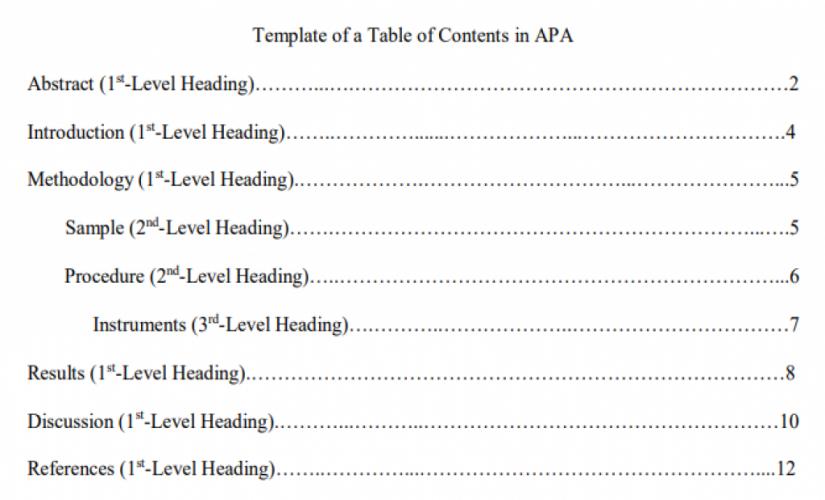
How to Write a Table of Contents in MLA
Unlike papers written in the APA style, MLA papers do not require a table of contents unless they are long enough. In this case, documents, like theses, dissertations, and books organized in the MLA format should have a TOC. For example, a table of contents in a book is a list of the chapters and major sections, along with their corresponding page numbers, providing an organized overview of its structure and text (Silvia, 2015). Even where a TOC is necessary, there is no specific method that a writer should use when writing it, and its structure is left to the writer’s discretion. To write a table of contents, writers list the main sections and subsections of their documents in the order they appear, using consistent formatting and including corresponding page numbers for each entry. However, when they have to include a TOC in their compositions, the information they capture should be much more than what would appear in the APA paper. Hence, an example of writing a TOC in MLA format is:
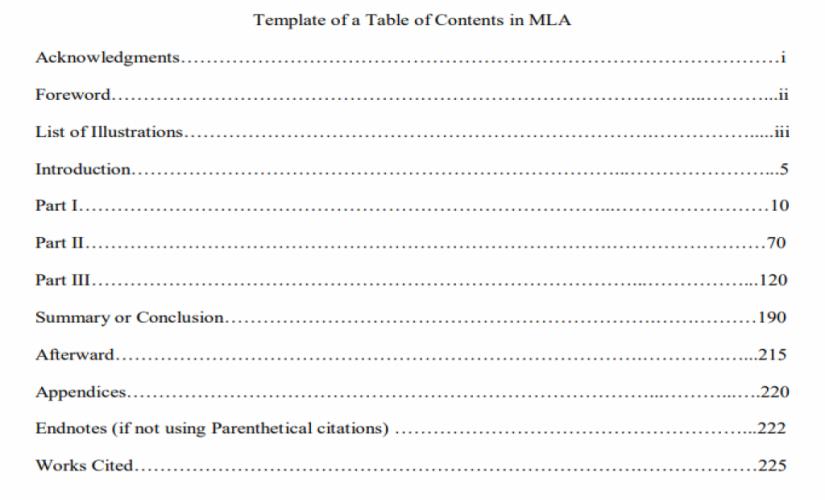
To create a good table of contents, writers ensure it is well-organized, accurately lists all sections and subsections with corresponding page numbers, and is formatted consistently for clarity and ease of navigation. In the case of writing a research paper, an example of an MLA TOC should be:
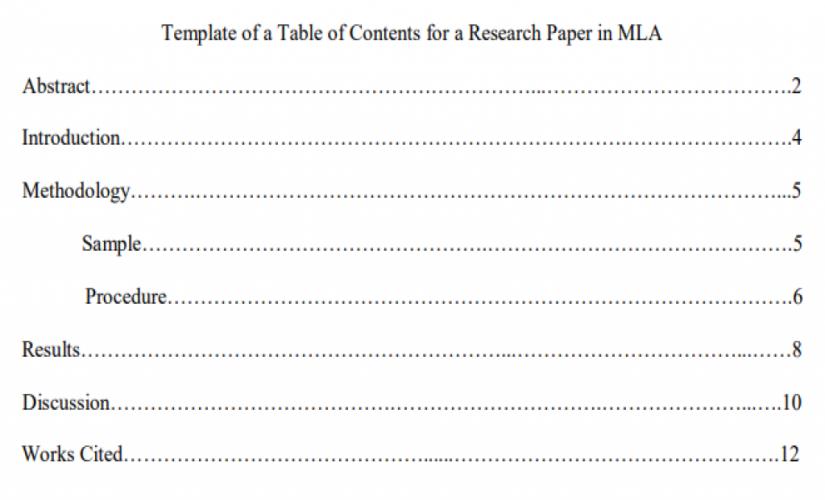
How to Write a Table of Contents in Chicago/Turabian
Like the MLA style, a Chicago/Turabian paper does not require writing a table of contents unless it is long enough. When a TOC is necessary, writers should capitalize on major headings. In this case, authors do not need to add a row of periods (. . . . . . . .) between the heading entry and the page number. Writers should use a table of contents format that lists all main sections and subsections in proper order, with clear headings, correct indentation for hierarchy, dot leaders connecting titles to right-aligned page numbers, and consistent formatting throughout (Stadtlander, 2022). Then, the arrangement of the text should start with the first-level heading, then the second-level heading, and, finally, the third-level title, just like in the APA paper. In turn, all the information that precedes the introduction part should have lowercase Roman numerals. Besides, the row of periods is only used for major headings. Therefore, an example of writing a TOC in Chicago/Turabian format is:
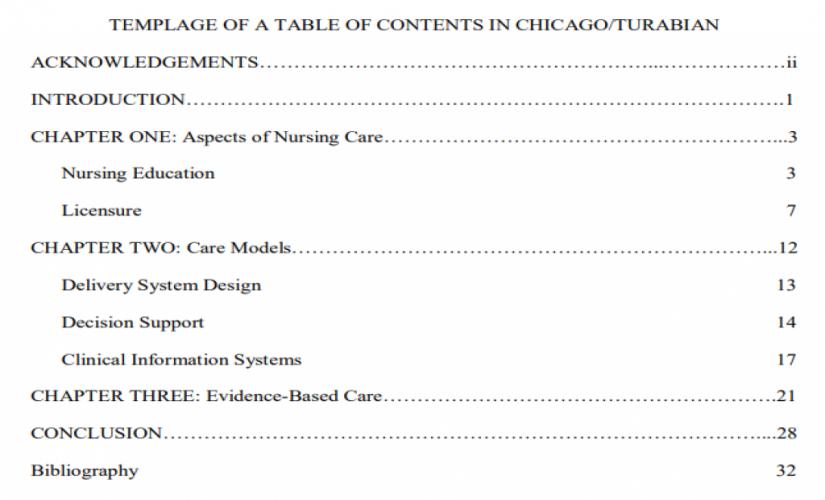
How to Write a Table of Contents in Harvard
Like in the other formats, writing a table of contents in the Harvard style is captured by having the title “Table of Contents” at the center of the page, in the first line. Basically, it comes after the title page and captures all the sections and subsections of Harvard papers. In other words, writers must indicate first-level headings in a numbered list. For example, to create a good table of contents, writers list the document’s main sections and subsections in the order they appear, apply consistent formatting, and include corresponding page numbers for each heading (Heard, 2022). Further on, scholars should align titles to the left side and capitalize them. In turn, if there is a need to show second-level headings, authors should list them under corresponding first-level headings by using bullet points. However, it is essential for students not to disrupt the numbering of first-level headings. Besides, writers should align second-level headings to the left side and indent them by half an inch and capitalize on a choosen piece. As a result, an example of writing a TOC in Harvard format should appear as below:
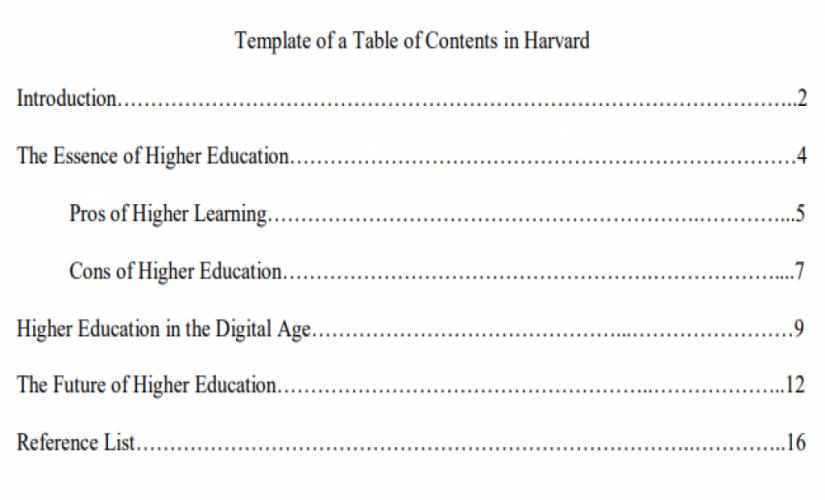
Common Mistakes
- Inconsistent Formatting: Using different fonts, sizes, or styles within a single TOC.
- Incorrect Page Numbers: Page numbers in a TOC do not match actual text pages.
- Missing Sections: Omitting important sections or subsections from a TOC.
- Overly Detailed Entries: Including too much detail makes a particular TOC hard to read.
- Lack of Subheadings: Not breaking down major sections into subheadings for clarity.
- Unclear Section Titles: Using vague or unclear titles does not reflect a completed text accurately.
- Improper Indentation: Incorrectly indenting headings and subheadings makes their hierarchy unclear.
- Inconsistent Capitalization: Using different capitalization styles for headings and subheadings.
- Failure to Update: Not updating a completed TOC after making changes to some sections of a final work.
- Missing List of Figures/Tables: Not including lists for figures and tables if they are present in a research paper.
- Ignoring Styles/Templates: Not using document styles or templates for doing a good TOC leads to inconsistency.
- Overly Long Titles: Including overly long section titles makes an entire TOC difficult to read.
Any TOC is an essential component of any academic paper, particularly for long documents, like theses, dissertations, and research papers. When students are writing a TOC, they should be careful to follow the applicable format’s rules and standards. Regardless of the format, writers should master the following tips when doing a TOC page:
- Write a TOC on a new page after the title page.
- Indicate first-level headings of the document in a numbered list.
- Indicate second-level headings under the corresponding first-level heading.
- If applicable, indicate third-level headings under the corresponding second-level heading.
- Write a specific page number for each heading.
- Put the provided content in a two-column table.
- Title the page with “Table of Contents.”
Fitzpatrick, R. (2021). Write useful books: A modern approach to designing and refining recommendable nonfiction . Useful Books Ltd.
Heard, S. B. (2022). The scientist’s guide to writing: How to write more easily and effectively throughout your scientific career . Princeton University Press.
Lang, T. A. (2017). Writing a better research article. Journal of Public Health and Emergency , 1 , 1–13. https://doi.org/10.21037/jphe.2017.11.06
Lewis, K. B., Graham, I. D., Boland, L., & Stacey, D. (2021). Writing a compelling integrated discussion: A guide for integrated discussions in article-based theses and dissertations. International Journal of Nursing Education Scholarship , 18 (1), 1–9. https://doi.org/10.1515/ijnes-2020-0057
Silvia, P. J. (2015). Write it up: Practical strategies for writing and publishing journal articles . American Psychological Association.
Stadtlander, L. (2022). Editorial: Rewriting a social science dissertation into a journal article and getting it published. Journal of Social, Behavioral, and Health Sciences , 16 (1), 94–102. https://doi.org/10.5590/jsbhs.2022.16.1.07
To Learn More, Read Relevant Articles
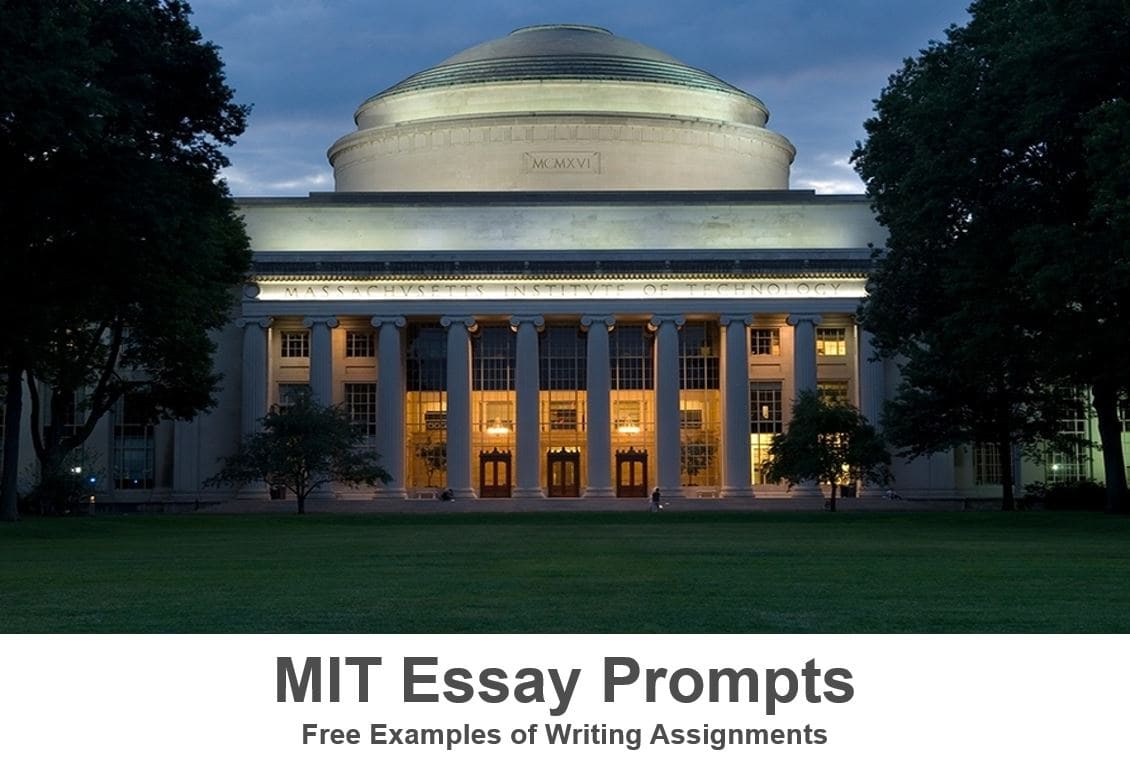
MIT Essay Prompts: Free Examples of Writing Assignments in 2024
- Icon Calendar 26 August 2020
- Icon Page 2576 words
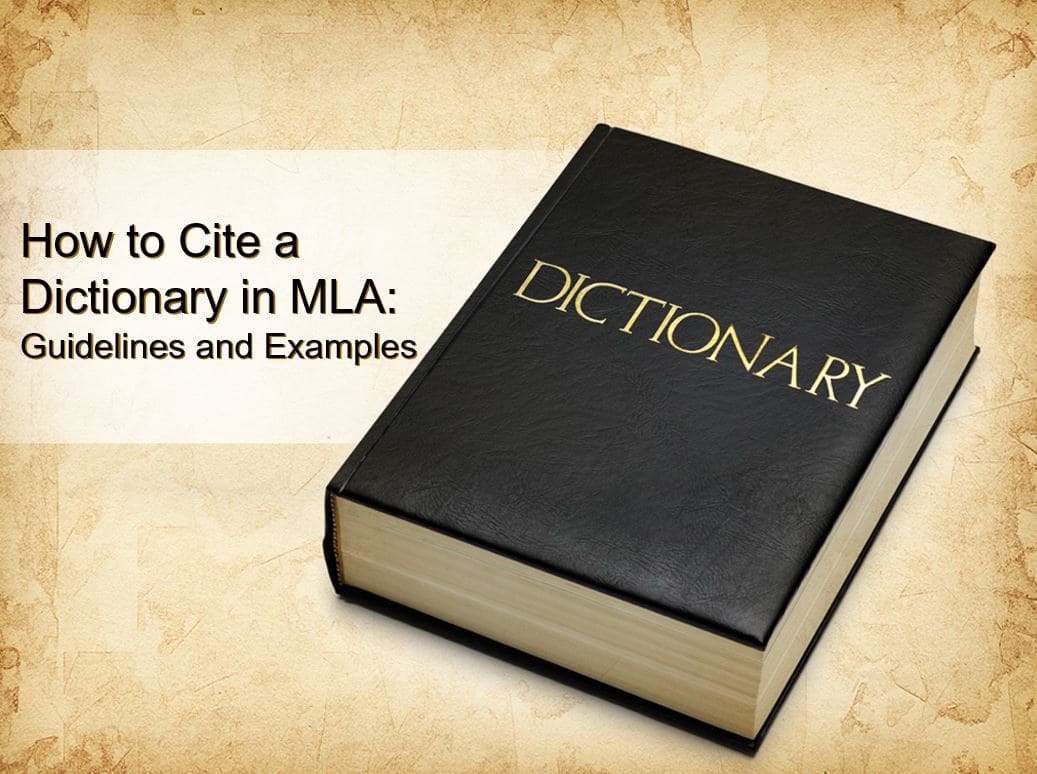
How to Cite a Dictionary in MLA 9: Guidelines and Examples
- Icon Calendar 24 August 2020
- Icon Page 1342 words
This domain is expired. If you are the owner and you want to renew it please contact your registrar
charlesstreetresearch.com
Have a language expert improve your writing
Run a free plagiarism check in 10 minutes, generate accurate citations for free.
- Knowledge Base
- Research paper
- Research Paper Format | APA, MLA, & Chicago Templates
Research Paper Format | APA, MLA, & Chicago Templates
Published on November 19, 2022 by Jack Caulfield . Revised on January 20, 2023.
The formatting of a research paper is different depending on which style guide you’re following. In addition to citations , APA, MLA, and Chicago provide format guidelines for things like font choices, page layout, format of headings and the format of the reference page.
Scribbr offers free Microsoft Word templates for the most common formats. Simply download and get started on your paper.
APA | MLA | Chicago author-date | Chicago notes & bibliography
- Generate an automatic table of contents
- Generate a list of tables and figures
- Ensure consistent paragraph formatting
- Insert page numbering
Instantly correct all language mistakes in your text
Upload your document to correct all your mistakes in minutes

Table of contents
Formatting an apa paper, formatting an mla paper, formatting a chicago paper, frequently asked questions about research paper formatting.
The main guidelines for formatting a paper in APA Style are as follows:
- Use a standard font like 12 pt Times New Roman or 11 pt Arial.
- Set 1 inch page margins.
- Apply double line spacing.
- If submitting for publication, insert a APA running head on every page.
- Indent every new paragraph ½ inch.
Watch the video below for a quick guide to setting up the format in Google Docs.
The image below shows how to format an APA Style title page for a student paper.

Running head
If you are submitting a paper for publication, APA requires you to include a running head on each page. The image below shows you how this should be formatted.

For student papers, no running head is required unless you have been instructed to include one.
APA provides guidelines for formatting up to five levels of heading within your paper. Level 1 headings are the most general, level 5 the most specific.

Reference page
APA Style citation requires (author-date) APA in-text citations throughout the text and an APA Style reference page at the end. The image below shows how the reference page should be formatted.

Note that the format of reference entries is different depending on the source type. You can easily create your citations and reference list using the free APA Citation Generator.
Generate APA citations for free
Scribbr Citation Checker New
The AI-powered Citation Checker helps you avoid common mistakes such as:
- Missing commas and periods
- Incorrect usage of “et al.”
- Ampersands (&) in narrative citations
- Missing reference entries

The main guidelines for writing an MLA style paper are as follows:
- Use an easily readable font like 12 pt Times New Roman.
- Use title case capitalization for headings .
Check out the video below to see how to set up the format in Google Docs.
On the first page of an MLA paper, a heading appears above your title, featuring some key information:
- Your full name
- Your instructor’s or supervisor’s name
- The course name or number
- The due date of the assignment

Page header
A header appears at the top of each page in your paper, including your surname and the page number.

Works Cited page
MLA in-text citations appear wherever you refer to a source in your text. The MLA Works Cited page appears at the end of your text, listing all the sources used. It is formatted as shown below.

You can easily create your MLA citations and save your Works Cited list with the free MLA Citation Generator.
Generate MLA citations for free
The main guidelines for writing a paper in Chicago style (also known as Turabian style) are:
- Use a standard font like 12 pt Times New Roman.
- Use 1 inch margins or larger.
- Place page numbers in the top right or bottom center.

Chicago doesn’t require a title page , but if you want to include one, Turabian (based on Chicago) presents some guidelines. Lay out the title page as shown below.

Bibliography or reference list
Chicago offers two citation styles : author-date citations plus a reference list, or footnote citations plus a bibliography. Choose one style or the other and use it consistently.
The reference list or bibliography appears at the end of the paper. Both styles present this page similarly in terms of formatting, as shown below.

To format a paper in APA Style , follow these guidelines:
- Use a standard font like 12 pt Times New Roman or 11 pt Arial
- Set 1 inch page margins
- Apply double line spacing
- Include a title page
- If submitting for publication, insert a running head on every page
- Indent every new paragraph ½ inch
- Apply APA heading styles
- Cite your sources with APA in-text citations
- List all sources cited on a reference page at the end
The main guidelines for formatting a paper in MLA style are as follows:
- Use an easily readable font like 12 pt Times New Roman
- Include a four-line MLA heading on the first page
- Center the paper’s title
- Use title case capitalization for headings
- Cite your sources with MLA in-text citations
- List all sources cited on a Works Cited page at the end
The main guidelines for formatting a paper in Chicago style are to:
- Use a standard font like 12 pt Times New Roman
- Use 1 inch margins or larger
- Place page numbers in the top right or bottom center
- Cite your sources with author-date citations or Chicago footnotes
- Include a bibliography or reference list
To automatically generate accurate Chicago references, you can use Scribbr’s free Chicago reference generator .
Cite this Scribbr article
If you want to cite this source, you can copy and paste the citation or click the “Cite this Scribbr article” button to automatically add the citation to our free Citation Generator.
Caulfield, J. (2023, January 20). Research Paper Format | APA, MLA, & Chicago Templates. Scribbr. Retrieved June 18, 2024, from https://www.scribbr.com/research-paper/research-paper-format/
Is this article helpful?

Jack Caulfield
Other students also liked, apa format for academic papers and essays, mla format for academic papers and essays, chicago style format for papers | requirements & examples, get unlimited documents corrected.
✔ Free APA citation check included ✔ Unlimited document corrections ✔ Specialized in correcting academic texts
- PRO Courses Guides New Tech Help Pro Expert Videos About wikiHow Pro Upgrade Sign In
- EDIT Edit this Article
- EXPLORE Tech Help Pro About Us Random Article Quizzes Request a New Article Community Dashboard This Or That Game Popular Categories Arts and Entertainment Artwork Books Movies Computers and Electronics Computers Phone Skills Technology Hacks Health Men's Health Mental Health Women's Health Relationships Dating Love Relationship Issues Hobbies and Crafts Crafts Drawing Games Education & Communication Communication Skills Personal Development Studying Personal Care and Style Fashion Hair Care Personal Hygiene Youth Personal Care School Stuff Dating All Categories Arts and Entertainment Finance and Business Home and Garden Relationship Quizzes Cars & Other Vehicles Food and Entertaining Personal Care and Style Sports and Fitness Computers and Electronics Health Pets and Animals Travel Education & Communication Hobbies and Crafts Philosophy and Religion Work World Family Life Holidays and Traditions Relationships Youth
- Browse Articles
- Learn Something New
- Quizzes Hot
- This Or That Game
- Train Your Brain
- Explore More
- Support wikiHow
- About wikiHow
- Log in / Sign up
- Education and Communications
- Technical Writing

How to Write a Table of Contents
Last Updated: June 16, 2024 Fact Checked
This article was co-authored by Stephanie Wong Ken, MFA . Stephanie Wong Ken is a writer based in Canada. Stephanie's writing has appeared in Joyland, Catapult, Pithead Chapel, Cosmonaut's Avenue, and other publications. She holds an MFA in Fiction and Creative Writing from Portland State University. This article has been fact-checked, ensuring the accuracy of any cited facts and confirming the authority of its sources. This article has been viewed 1,054,509 times.
The Table of Contents in a document acts as a map for the reader, making it easier for them to find information in the document based on title and page number. A good Table of Contents should be organized, easy to read and simple to use. You can write a Table of Contents manually on your computer or have a word processing tool create it for you. Make sure the Table of Contents is formatted properly in your final document so it is as accurate and accessible as possible.
Writing a Table of Contents
To write a simple table of contents, create a new page in your document and type the names of the chapters or sections of your piece of writing. Then, use your word processing program to insert the page number where each section starts. If you move things around, the page number in your table of contents will automatically update.
Sample Tables of Contents

Creating the Table of Contents on a Word Processor

- The Table of Contents should be on its own page. Do not include the introduction or a dedication on the same page as the Table of Contents.

- For example, you may write down main headings like, “Introduction,” “Case Study 1,” or “Conclusion.”

- For example, under the main heading “Introduction” you may write the subheading, “Themes and Concepts.” Or under the main heading “Conclusion” you may write, “Final Analysis.”
- You can also include sub-subheadings underneath the subheadings, if applicable. For example, under the subheading “Themes and Concepts” you may have the sub-subheading, “Identity.”
- Some papers do not have subheadings at all, only main headings. If this is the case, skip this step.

- For example, if the “Introduction” section begins on page 1, you will attach “page 1” to the Introduction heading. If the “Conclusion” section begins on page 45, attach “page 45” to the Conclusion heading.

- Check that the subheadings are located underneath the correct headings, indented to the right.
- Make sure there are page numbers for the subheadings listed as well.
- You can center the content in the table using the table options if you want the content to appear a few spaces away from the lines of the table. You can also leave the content indented to the left if you'd prefer.

- You can put the title above the table or in a separate row on the top of the rest of the content.
Using a Word Processing Tool

- You should also confirm the page numbers are correct in the document. Each page should be numbered in order. Having the correct page numbers will ensure the Table of Contents is created correctly when you use the word processing tool.

- If there are subheadings in your document, label them “Heading 2.” Highlight each subheading and click on “Heading 2” in the Styles tab.
- If there are sub-subheadings in your document, label them “Heading 3.” Highlight each subheading and click on “Heading 3” in the Styles tab.
- The text and font for each main heading may change based on the settings for “Heading 1,” “Heading 2,” and “Heading 3.” You can choose your preferred text and font for each main heading so they appear as you like in the Table of Contents.

- You can choose the built-in Table of Content options, where the tool will automatically choose a font size and style for you.
- You can also go for from a list of custom Table of Contents, where you choose the font color and size based on your preferences.
Polishing the Table of Contents

- You should also check the subheadings or sub-subheadings in the Table of Contents, if applicable, to ensure they match those in the document.

- If you created the Table of Contents manually, do this by going in and adjusting the headings and/or the page numbers when they change.
- If you created the Table of Contents with a word processing tool, update it by clicking the Update option by the Table of Contents option on the Reference tab. You can side clicking on the Table of Contents and choosing “update” that way.
Community Q&A
You Might Also Like

- ↑ https://edu.gcfglobal.org/en/word-tips/how-to-create-a-table-of-contents-in-word/1/#
- ↑ https://examples.yourdictionary.com/reference/examples/table-of-content-examples.html
- ↑ http://bitesizebio.com/21549/using-word-to-write-your-thesis-making-a-table-of-contents-inserting-captions-and-cross-referencing/
- ↑ https://guides.lib.umich.edu/c.php?g=283073&p=1886010
- ↑ https://nsufl.libguides.com/c.php?g=413851&p=2820026
About This Article

To write a table of contents, open a new document and list the major headings, titles, or chapters of the project in chronological order. Next, insert subheadings or subtopics if your project has those. Fill in the page number where each heading starts, then format the content in a table with 2 columns. Place the headings and subheadings in order in the first column, then put the page numbers in the second column. Don't forget to add a "Table of Contents" title at the top of the document! To learn more about polishing your Table of Contents, read on! Did this summary help you? Yes No
- Send fan mail to authors
Reader Success Stories
Mar 22, 2017
Did this article help you?

Mar 3, 2022
Feb 1, 2018

Featured Articles

Trending Articles

Watch Articles

- Terms of Use
- Privacy Policy
- Do Not Sell or Share My Info
- Not Selling Info
Get all the best how-tos!
Sign up for wikiHow's weekly email newsletter
- Dissertation & Thesis Guides
- Basics of Dissertation & Thesis Writing
- How to Create a Table of Contents for Dissertation, Thesis or Paper & Examples
- Speech Topics
- Basics of Essay Writing
- Essay Topics
- Other Essays
- Main Academic Essays
- Research Paper Topics
- Basics of Research Paper Writing
- Miscellaneous
- Chicago/ Turabian
- Data & Statistics
- Methodology
- Admission Writing Tips
- Admission Advice
- Other Guides
- Student Life
- Studying Tips
- Understanding Plagiarism
- Academic Writing Tips
- Essay Guides
- Research Paper Guides
- Formatting Guides
- Basics of Research Process
- Admission Guides
How to Create a Table of Contents for Dissertation, Thesis or Paper & Examples

Table of contents
Use our free Readability checker
A dissertation table of contents is a list of the chapters and sections included in a dissertation or thesis, along with their page numbers. It helps to navigate the document easily and locate specific information. Each chapter or section should be listed with its corresponding page number. The table of contents should be formatted according to the guidelines of the specific style guide being used, such as APA or MLA.
We would guess that students usually start working on the table of contents at the last minute. It is quite apparent and makes sense, as this is the list of chapters and sections with page locations. Do you think it's easy?
From our experience, it can be quite tricky to organize everything according to APA, Chicago, or any other academic writing style. In this blog, we will discuss how to write a table of contents for a research paper , thesis or dissertation in Microsoft Word. We will create it together to guide students through the process.
Also, here you will find examples of table of contents created by thesis writers at StudyCrumb . Let’s go!
What Is a Table of Contents: Definition
It is obvious that the table of contents (TOC) is an essential manuscript part you can’t skip. If you are dealing with a dissertation, thesis or research paper, you need to know how to build it in accordance with academic guidance. This is a detailed roadmap for your work and outlined structure you can follow for a research presentation.
In case you are working on an essay or report, you may not include the table of contents, as it is a short academic text. But for the research paper, thesis or dissertation, table of contents is essential and required. It is possible to say the same about any Master’s project. It should be located between the dissertation abstract and introduction chapter. In most cases, it is about 2-3 pages long.
Our expert dissertation writing service prepared a great template that can be used for your work. Make your research formatting easy with ready solutions!
Types of Table of Contents
How to choose which table of contents will fit your research paper, thesis, dissertation, or report best? Make a decision based on your work length. Some academic writing styles, such as APA paper format or MLA style , have specific formatting for this list.
However, we will outline the most commonly used typology:
- Single-level table of contents. At this type, we use only chapters. For instance, you will have an Introduction, Literature Review, methodology, and other chapters with page numbers. It can be used for shorter research work. For long writing forms like manuscripts, it can be too broad, and you will need to go into details.
- Subdivided table of contents. The most frequently used form to organize the contents table. It will include not only chapters but also sections — a level 2 subheading for each part. It will help to be more specific about what to expect in each part of your research work.
- Table of contents with multiple levels. This is a more divided structure, including subheadings with a level 3 for each section. Quite often, those subheadings can be rewritten or deleted during the last editing. It is essential to keep them in the right order.
Before you decide which type will work best for you, let us share with you some examples of each formatting style.
Example of Table of Contents With a Single Level
Introduction: The Misinformation Roots ………..…… 3 Literature Review .....................................….....………… 10 Research Methodology and Design ……................. 24 Results.............................................................................. 28 Discussion ....................................................................... 32
Sometimes, you will need to put an extra emphasis on subsections. Check this layout to see how your subheadings can be organized.
Example of Table of Contents Page with Subdivided Levels
Introduction: Information War ............……………….. 3 Background…………………………………….………..…… 4 Current State ……………………………………...…...…… 5 Defining Research Questions………………………. 9 Literature Review………………………...……………..……... 11 The Roots of Information Warfare ………....… 11 Information Wars …………………………….………..… 14 Cyber Wars Research ........................................ 17
If you are working on a lengthy, complex paper, this outline will suit your project most. It will help readers navigate through your document by breaking it down into smaller, more manageable sections.
Multi-Level Table of Contents Page Example
Introduction……………………………………………….......……….… 3 Emergence of Climate Change ………..……....….….. 3 Key Activist Groups in Climate Change .............. 5 Greenpeace International ………..…………......... 9 European Climate Foundation …….……………. 10 WWF ……………………………………….……….............. 11 Significant Movements ……………….………....……… 13 Literature Review ……………………………………......…………. 15
What Sections Should Be Included in a Table of Contents?
To start with, the scientific table of contents should include all chapters and its subheading. It is important to choose the formatting that will give your readers a full overview of your work from the very beginning. However, there are other chapters that you may miss constructing the 2-pager table. So, let's look at all you need to include:
- Dissertation introduction
- Literature review
- Research methodology
- Results section
- Dissertation discussion
- Conclusion of a thesis
- Reference list. Mention a number of a page where you start listing your sources.
- Appendices. For instance, if you have a data set, table or figure, include it in your research appendix .
This is how the ideal structured dissertation or research paper table of contents will look like. Remember that it still should take 2 pages. You need to choose the best formatting style to manage its length.
Tables, Figures, and Appendices in TOC
While creating a table of contents in a research paper, thesis or dissertation, you will need to include appendices in each case you have them. However, the formatting and adding tables and figures can vary based on the number and citation style. If you have more than 3 tables or figures, you may decide to have all of them at the end of your project. So, add them to the table of contents.
Figures, graphics, and diagrams in research papers, dissertations and theses should be numbered. If you use them from another source, ensure that you make a proper citation based on the chosen style guide.
Appendix in Table of Contents Example
Appendix A. Row Data Set…………………………………… 41 Appendix B. IBR Data………………………………………….… 43 Appendix C. SPSS Data………………………………………… 44
What Shouldn't Be Included in a Table of Contents?
When creating a dissertation table of contents, students want to include everything they have in a document. However, some components should not be on this page. Here is what we are talking about:
- Thesis acknowledgement
- Paper abstract
- The content list itself
Acknowledgement and abstract should be located before the content list, so there is no need to add them. You need to present a clear structure that will help your readers to navigate through the work and quickly find any requested information.
How to Create a Table of Contents for a Research Paper or Dissertation In Word?
It may look like working with this list can take a long. But we have one proposal for our users. Instead of writing a table of contents manually, create it automatically in Microsoft Word. You do not need any specific tech knowledge to do this. Let’s go through this process step-by-step and explain how to make a table of contents for a research paper or dissertation in a few clicks.
- Open Home tab and choose the style for your table of contents (ToC next).
- Apply heading 1 to your chapters, heading 2 to the subheading, and if needed heading 3 to the level 3 heading.
- Next, you are going to create a research paper or PhD dissertation table of contents. Open References and choose ToC.
- Choose the citation style for your work. For example, let’s choose APL for now. Meeting all style requirements (bold font, title formatting, numbers) is essential.
- Define the number of levels for your dissertation or thesis table of contents. In case you want to have 3 levels, choose Automatic Table 2.
- You are done! Click ok, and here is your page with listed chapters!
You see how easy it can be! Every time you make changes to your text or headings, it will be automatic.
Updating Your Table of Contents in MS Word
Table of contents of a research paper or dissertation is created, and you continue to edit your work until submission. It is common practice, and with MS Word, you can automate all the updates.
Let’s outline this process in our step-by-step guide!
- Right-click on your ToC in a document.
- Update field section is next.
- Choose “update ToC."
- Here, you can update your entire ToC — choose an option that works the best for you!
As you may see, working with automated solutions is much easier when you write a dissertation which has manifold subsections. That is why it is better to learn how to work on MS Word with the content list meaning be able to manage it effectively.
Table of Contents Examples
From our experience, students used to think that the content list was quite a complicated part of the work. Even with automated solutions, you must be clear about what to include and how to organize formatting. To solve the problem and answer all your questions, use our research paper or dissertation contents page example. Our paper writers designed a sample table of contents to illustrate the best practices and various styles in formatting the work.
Check our samples to find advanced options for organizing your own list.
Example of Table of Contents in Research Paper

As you can see, this contents page includes sections with different levels.
Thesis/Dissertation Table of Contents Example

Have a question about your specific case? Check samples first, as we are sure you can get almost all the answers in our guides and sample sets.
>> Read more: APA Format Table of Contents
Tips on Creating a Table of Contents
To finalize all that we shared on creating the table of contents page, let’s go through our tips list. We outline the best advice to help you with a dissertation table of contents.
- Use automated solutions for creating a list of chapters for your report, research papers, or dissertations — it will save you time in the future.
- Be clear with the formatting style you use for the research.
- Choose the best level type of list based on the paper length.
- Update a list after making changes to the text.
- Check the page list before submitting the work.
Bottom Line on Making Table of Contents for Dissertations/ Papers
To summarize, working with a research paper, thesis or dissertation table of contents can be challenging. This article outlines how to create a table of contents in Word and how to update it appropriately. You can learn what to include in the content list, how long it can be, and where to locate it. Write your work using more than one table of contents sample we prepared for students. It is often easy to check how the same list was made for other dissertations before finalizing yours. We encourage you to learn how to create a list with pages automatically and update it. It will definitely make your academic life easier.
Not sure if your work 's quality level is enough for getting a top-notch result? We’ve got you covered! Our team of skilled academic writers is always ready to help once you ask “ write my dissertation for me !" Just select your writer, send them your requirements and get a custom study tailored to your instructions.

Joe Eckel is an expert on Dissertations writing. He makes sure that each student gets precious insights on composing A-grade academic writing.
You may also like

- Discoveries
- Right Journal
- Journal Metrics
- Journal Fit
- Abbreviation
- In-Text Citations
- Bibliographies
- Writing an Article
- Peer Review Types
- Acknowledgements
- Withdrawing a Paper
- Form Letter
- ISO, ANSI, CFR
- Google Scholar
- Journal Manuscript Editing
- Research Manuscript Editing
Book Editing
- Manuscript Editing Services
Medical Editing
- Bioscience Editing
- Physical Science Editing
- PhD Thesis Editing Services
- PhD Editing
- Master’s Proofreading
- Bachelor’s Editing
- Dissertation Proofreading Services
- Best Dissertation Proofreaders
- Masters Dissertation Proofreading
- PhD Proofreaders
- Proofreading PhD Thesis Price
- Journal Article Editing
- Book Editing Service
- Editing and Proofreading Services
- Research Paper Editing
- Medical Manuscript Editing
- Academic Editing
- Social Sciences Editing
- Academic Proofreading
- PhD Theses Editing
- Dissertation Proofreading
- Proofreading Rates UK
- Medical Proofreading
- PhD Proofreading Services UK
- Academic Proofreading Services UK
Medical Editing Services
- Life Science Editing
- Biomedical Editing
- Environmental Science Editing
- Pharmaceutical Science Editing
- Economics Editing
- Psychology Editing
- Sociology Editing
- Archaeology Editing
- History Paper Editing
- Anthropology Editing
- Law Paper Editing
- Engineering Paper Editing
- Technical Paper Editing
- Philosophy Editing
- PhD Dissertation Proofreading
- Lektorat Englisch
- Akademisches Lektorat
- Lektorat Englisch Preise
- Wissenschaftliches Lektorat
- Lektorat Doktorarbeit
PhD Thesis Editing
- Thesis Proofreading Services
- PhD Thesis Proofreading
- Proofreading Thesis Cost
- Proofreading Thesis
- Thesis Editing Services
- Professional Thesis Editing
- Thesis Editing Cost
- Proofreading Dissertation
- Dissertation Proofreading Cost
- Dissertation Proofreader
- Correção de Artigos Científicos
- Correção de Trabalhos Academicos
- Serviços de Correção de Inglês
- Correção de Dissertação
- Correção de Textos Precos
- 定額 ネイティブチェック
- Copy Editing
- FREE Courses
- Revision en Ingles
- Revision de Textos en Ingles
- Revision de Tesis
- Revision Medica en Ingles
- Revision de Tesis Precio
- Revisão de Artigos Científicos
- Revisão de Trabalhos Academicos
- Serviços de Revisão de Inglês
- Revisão de Dissertação
- Revisão de Textos Precos
- Corrección de Textos en Ingles
- Corrección de Tesis
- Corrección de Tesis Precio
- Corrección Medica en Ingles
- Corrector ingles
Select Page
How To Write a Table of Contents for Academic Papers
Posted by Rene Tetzner | Mar 17, 2021 | How To Get Published | 0 |

How To Write a Table of Contents for Academic Papers Although every author begins a writing project with the best of intentions and an ideal outline in mind, it often proves difficult to stick to one’s initial plans as the text begins to unfold and its complexities grow in number and depth. Sometimes a document quickly exceeds the word limits for a project, and at others certain important aspects are neglected or turn out a good deal shorter than intended. Drafting a working table of contents for your writing project can provide an excellent tool for keeping your discussion on track and your text within length requirements as you write.
A working table of contents should begin with a title. This title may change as you draft your text, but a working title will help you focus your thoughts as you devise the headings and plan the content for the main parts, chapters, sections and subsections that should be added beneath it. All headings, whether numbered or not, should be formatted in effective and consistent ways that distinguish section levels and clearly indicate the overall structure of the text. These headings can also be altered as your writing advances, but they will provide an effective outline of what you need to discuss and the order in which you think the main topics should be presented. At this initial stage, it is also a good idea to write under each heading a brief summary of or rough notes about what you hope to include in that part of the document, and you can continue to add, adjust and move material around within and among the sections as your table of contents and ultimately your text progresses. Reminders of how long (measured in words, paragraphs or pages) the entire text and each of its parts should ideally be may also prove helpful.

Once you have your annotated table of contents drafted, it will serve as an informative list of both content and order that can be productively consulted as you write. Assuming you construct your working table of contents as a computer file in the same program you intend to use for writing the entire document, you can also use the table of contents as a template for composing the text as a whole, replacing your rough notes under each heading with the formal text as you draft it. This practice lends an immediate physical presence to the guidance provided by your table of contents because you are literally working within that outline, which can be especially wise if you tend to run on or become distracted by new ideas as you write.
Finally, your working table of contents can become your final table of contents if one is required for your project. If you would like to use the working table of contents in this way and are also using it as a template, be sure to rename the file and save a separate copy before you begin adding the formal text of your document. Then you can simply delete your summaries and rough notes from the original table of contents to make your final one, leaving only the headings, to which you can add relevant page numbers as required.

You might be interested in Services offered by Proof-Reading-Service.com
Journal editing.
Journal article editing services
PhD thesis editing services
Scientific Editing
Manuscript editing.
Manuscript editing services
Expert Editing
Expert editing for all papers
Research Editing
Research paper editing services
Professional book editing services
Related Posts

Choosing the Right Journal
September 10, 2021

Example of a Quantitative Research Paper
September 4, 2021

What Is a Good H-Index Required for an Academic Position?
September 3, 2021

Acknowledgements Example for an Academic Research Paper
September 1, 2021
Our Recent Posts

Our review ratings
- Examples of Research Paper Topics in Different Study Areas Score: 98%
- Dealing with Language Problems – Journal Editor’s Feedback Score: 95%
- Making Good Use of a Professional Proofreader Score: 92%
- How To Format Your Journal Paper Using Published Articles Score: 95%
- Journal Rejection as Inspiration for a New Perspective Score: 95%
Explore our Categories
- Abbreviation in Academic Writing (4)
- Career Advice for Academics (5)
- Dealing with Paper Rejection (11)
- Grammar in Academic Writing (5)
- Help with Peer Review (7)
- How To Get Published (146)
- Paper Writing Advice (17)
- Referencing & Bibliographies (16)
WTO / Personal / Lists / Free Table of Contents Templates (for Microsoft Word)
Free Table of Contents Templates (for Microsoft Word)
Whether you are writing a book, large essay, dissertation, or other longer academic papers, you will have to include a table of contents. It will act as a roadmap for the reader to each portion of your writing. It helps the reader to locate specific information in a document or revisit their favorite parts easily within the text. A well-structured TOC should simplify the way the reader finds what they are looking for and should always be placed on a separate page, just after the first page of an academic paper and after the abstract.
Depending on the type of writing, you may find that different documents require different styles of a TOC. Some may require numbers, while others may require a non-numbered TOC. It is, therefore, the writer’s duty to check the type of TOC they are required to include in their writing.
Free Table of Contents Templates
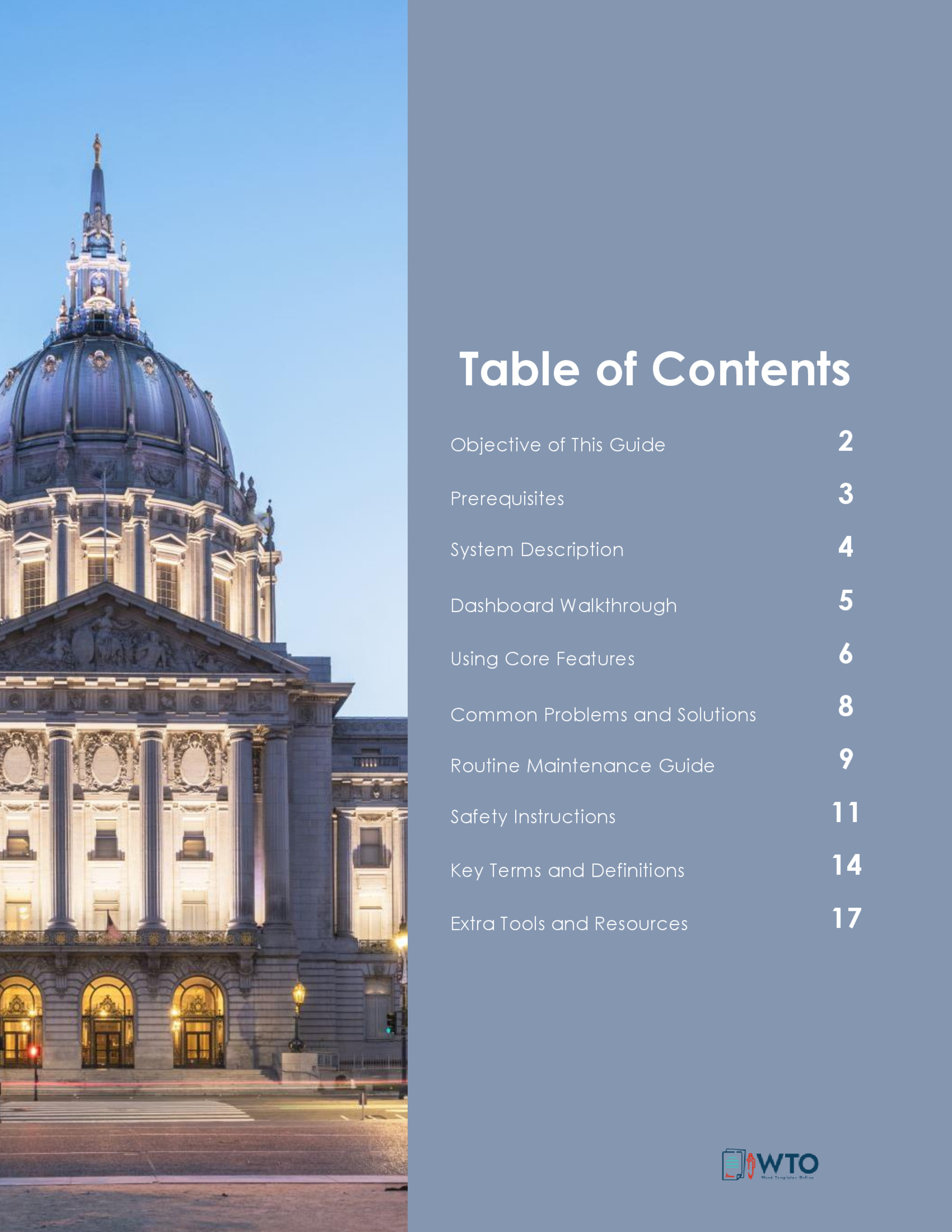
Simple templates
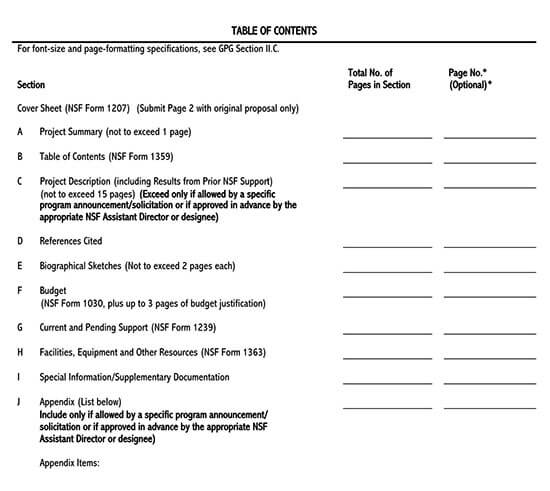
What is a Table of Contents?
A Table of Contents (TOC) is an organized list of all the parts of a document or book organized in the order in which the parts appear.
The TOC usually contains the titles, chapters, figures, and major sections of a document clearly labeled by their page number. It should be added last or updated after completing the whole document or book to capture all the contents accurately.
The Purpose of table of contents
If a book, business proposal , business report , or publication is long enough to include chapters, then a TOC will likely be included at the beginning of the book, report, or publication.
The TOC provides a sequential list of the book’s organizational structure, most commonly denoting the title, chapter number, and the starting page location. The chapter, page number, and title will help guide the reader in finding specific sections.
Basically, it serves two main purposes; one is to provide the reader with a general overview of what is contained in the document and how the content is organized, and the other is to enable the reader to go directly to the specific section of an on-line document.
Key Elements of a Table of Contents
The TOC is where one lists the chapters and major sections of their document, together with their page numbers. A clear and well-out table is very important as it indicates a quality paper is structured.
The key elements that should be included in the TOC are:
- The page titles
- Clear headings and subheadings
- The page numbers that show where in the document each section can be found
When creating your table, make sure to include all level one and two headings. You may also decide to include level three headings, although they are optional to include and should not be included in the TOC has reached its maximum length of two pages.
Level One: CHAPTER 2: Literature Review
Level Two: 2.1 Overview of Information
Level Three: 2.1.1 Discipline of Knowledge
Ensure that you use clear headings throughout your document to make your table easy to understand. Keep in mind that the reader will see the table first before reading through your document.
Other things to include in your table include the appendices and tables. Including these two, however, depend largely on how many there are in your document.
If there are more than three tables and figures, you might consider listing them on a separate page. Else, you can include them in your table.
Steps to Create a Table of Contents in MS Word
For you to create a TOC in Microsoft Word, you must first define what you’d like to include in this part. First, start off by applying the different heading styles throughout your document.
Once you’ve done that, follow these steps to insert a TOC in MS Word automatically:
Add a title on the TOC page. Ensure that you follow the standard format specific to your document or as per your department’s guidelines.

Put your cursor where you want the table to go. The table is usually included between the abstract and the introduction.
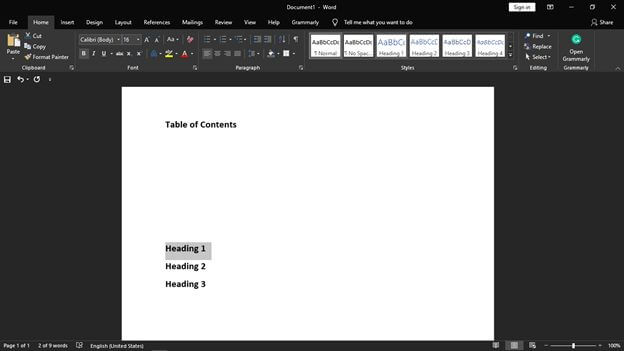
In the ribbon, find the reference section and locate the TOC section. Use the search tab on the ribbon to search for the table.
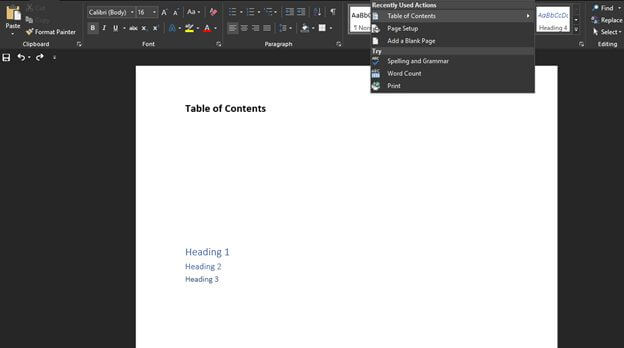
Click the arrow that is next to the TOC icon and select Custom Table of Contents. Here, select the level of heading that you would like to include in your table and also make the necessary adjustments to each level by clicking the modify button.
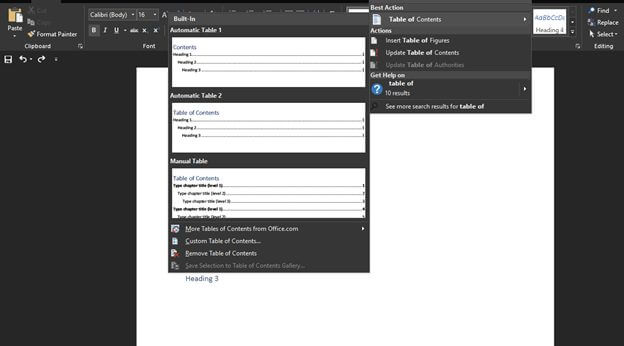
Click on Custom table of contents.
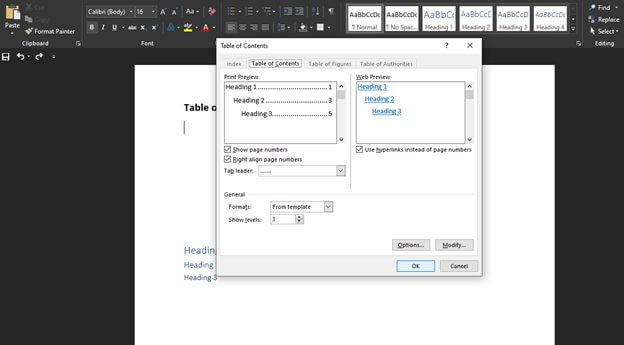
After you’ve made sure that everything is OK. Click OK, and your TOC will be automatically generated.
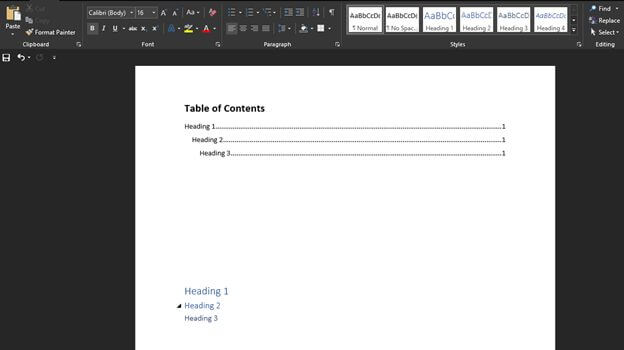
Tips on Preparing Table of Contents
It is recommended that you use your TOC template last after to make sure that it provides a clear overview of your document. You can still draw up a mock TOC in your early stages of writing to help you formulate a structure and think through your topics and how you are going to research.
Make sure that all the heading levels are properly defined in your document before inserting the template.
Remember that the reader will most likely go through your table first before diving into the document to get an overview of what to expect. Make sure that your TOC is clear and that it captures your entire document.
Frequently Asked Questions
No, the TOC is basically a snapshot of the headings, tables, and page numbers in a document and does not automatically update itself as you make changes. Anytime you make changes to your document, you can update it by simply right-clicking on it and selecting the update field.
No, the TOC is usually included between the abstract and the introduction.
Yes, the maximum length of a TOC should be two pages, regardless of the type of document you are writing.
Regardless of your document’s type or size, using a TOC can help direct the readers to exactly where they want to be. Other than making your document more reader-friendly, the table also makes it easier for the author to go back and change or update contents throughout their document if necessary. By default, MS Word generates a TOC when you use the first three built-in heading styles, i.e., Heading 1, Heading 2, and Heading 3. To apply the different heading styles, simply select the style from the “Home” tab, or you can use a TOC template. Once you’ve properly defined the heading styles, follow the procedure given above to insert your table automatically.
About This Article

Was this helpful?
Great! Tell us more about your experience
Not up to par help us fix it, keep reading.

8 Free Move-Out Cleaning Checklists – Editable

10 Free Homeschool Report Card Templates

Free Hoarder Cleaning Checklist Templates

Caregiver Schedule / Daily Checklist Templates
Thank you for your feedback.
Your Voice, Our Progress. Your feedback matters a lot to us.
Home — Essay Samples — Literature — Romeo and Juliet — Romeo and Juliet Research Paper: The Tragedy of Love
Romeo and Juliet Research Paper: The Tragedy of Love
- Categories: Romeo and Juliet
About this sample

Words: 718 |
Published: Jun 13, 2024
Words: 718 | Pages: 2 | 4 min read
Table of contents
The power of fate and free will, societal expectations and rebellion, the role of mercutio: comic relief or catalyst, bibliography.

Cite this Essay
Let us write you an essay from scratch
- 450+ experts on 30 subjects ready to help
- Custom essay delivered in as few as 3 hours
Get high-quality help

Verified writer
- Expert in: Literature

+ 120 experts online
By clicking “Check Writers’ Offers”, you agree to our terms of service and privacy policy . We’ll occasionally send you promo and account related email
No need to pay just yet!
Related Essays
3 pages / 1349 words
4 pages / 1776 words
3.5 pages / 1634 words
4 pages / 1712 words
Remember! This is just a sample.
You can get your custom paper by one of our expert writers.
121 writers online
Still can’t find what you need?
Browse our vast selection of original essay samples, each expertly formatted and styled
Related Essays on Romeo and Juliet
The tragedy of Romeo and Juliet, written by William Shakespeare, is one of the most famous love stories in literature. Throughout the play, Shakespeare uses various forms of figurative language to enhance the themes of love, [...]
In Romeo and Juliet, William Shakespeare presents his audience with a collection of dynamic characters who undergo significant transformations throughout the play. These characters not only play crucial roles in the tragic [...]
The tragic tale of Romeo and Juliet by William Shakespeare is a timeless classic that continues to captivate audiences worldwide. One of the central themes of the play is the concept of fatal flaws, which are inherent weaknesses [...]
Family feud is a timeless theme that resonates with audiences across cultures and generations. In Shakespeare's famous tragedy, "Romeo and Juliet," the feud between the Montague and Capulet families serves as the central [...]
Life is driven by both choice and faith but choice is mainly what life is driven by. To begin with, fate is responsible for the reason that both Romeo and Juliet were born into two opposite families that hate each other, yet [...]
In William Shakespeare’s iconic play Romeo and Juliet, Tybalt plays a crucial role in propelling the tragic events that unfold. Despite his relatively brief appearances on stage, Tybalt’s fiery temperament and vengeful nature [...]
Related Topics
By clicking “Send”, you agree to our Terms of service and Privacy statement . We will occasionally send you account related emails.
Where do you want us to send this sample?
By clicking “Continue”, you agree to our terms of service and privacy policy.
Be careful. This essay is not unique
This essay was donated by a student and is likely to have been used and submitted before
Download this Sample
Free samples may contain mistakes and not unique parts
Sorry, we could not paraphrase this essay. Our professional writers can rewrite it and get you a unique paper.
Please check your inbox.
We can write you a custom essay that will follow your exact instructions and meet the deadlines. Let's fix your grades together!
Get Your Personalized Essay in 3 Hours or Less!
We use cookies to personalyze your web-site experience. By continuing we’ll assume you board with our cookie policy .
- Instructions Followed To The Letter
- Deadlines Met At Every Stage
- Unique And Plagiarism Free

American Psychological Association

5 ways to improve mental health at work
Supportive workplace practices can boost employee well-being, company morale

U.S. workers adjust to changing nature of employment
Survey highlights include remote work, four-day workweeks, and AI adoption

Psychological safety in the changing workplace
Survey shows link with job satisfaction, including creativity and innovation

Younger workers feel stressed, lonely, and undervalued
Nearly one-third of U.S. employees prefer working with people their own age
Membership in APA

APA Community
A new exclusive destination tailored for APA members

Membership benefits
Unlock the tools, discounts, and services included with your membership

Renew your membership
Keep your benefits and access to leading psychological information
Psychology topics spotlight

Misinformation and disinformation

Resources to navigate trauma

Tips to foster a healthy workplace
Science and practice of psychology

Ethics Code

Continuing Education

Grants, Awards, and Funding
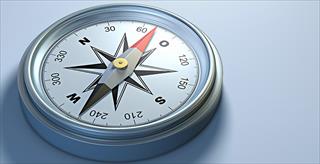
Standards and Guidelines
Networks and communities

Network with peers, enhance your professional development, expand your personal growth, and more

APA Divisions

High school teachers

Undergraduate educators

Graduate students

Early career psychologists

Managing your career
Resources to help you throughout your career in psychology, including finding a job, salary data, finances and money management, mentoring and supervision, and training and professional development

Explore career paths

Psychologist profiles

How did you get that job?

Events and training
Featured jobs
Apa publications and products.

Write with clarity, precision, and inclusion
Children’s books
Monitor on Psychology
Newsletters
Reports and surveys
Continuing education
Merchandise

Real Siblings
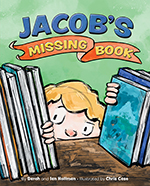
Jacob's Missing Book

Harper Becomes a Big Sister
Attachment-Based Family Therapy for Sexual and Gender Minority Young Adults and Their Non-Accepting Parents
Dismantling Everyday Discrimination
APA Services

Learn how you can help APA advocate for psychology-informed federal policy and legislation, and support psychological research

APA Services, Inc.
A companion professional organization to APA, serving all members and advocating for psychology

An official website of the United States government
Here's how you know
Official websites use .gov A .gov website belongs to an official government organization in the United States.
Secure .gov websites use HTTPS A lock ( Lock A locked padlock ) or https:// means you’ve safely connected to the .gov website. Share sensitive information only on official, secure websites.
ALERT: Reports of a $600 payment increase in June are FALSE: NO COLA increase will occur UNTIL January 2025.
Family benefits
Family benefits provide monthly payments to certain family members of people who are eligible for Retirement or Disability.
Family benefits are also commonly called “spousal” or “child” benefits.
Who can get Family benefits
Spouses, ex-spouses, children, and some grandchildren may be eligible for Family benefits. We consider age, marital status, and other factors when we determine eligibility.
What you could get
You could get up to half of your family member’s benefit amount and may be eligible for Medicare based on their work history.
What you need to report
To make sure you get the right payments, tell us about updates, like marriage, school, and income changes.

IMAGES
VIDEO
COMMENTS
Generating the table of contents. Now you can generate your table of contents. First write the title "Contents" (in the style of a level 1 heading). Then place your cursor two lines below this and go to the References tab. Click on Table of Contents and select Custom Table of Contents…. In the popup window, select how many levels of ...
APA Table of Contents. The APA (American Psychological Association) Table of Contents is a structured outline that provides an overview of the content of a research paper or manuscript. It is typically included in the front matter of the document and lists the major sections and subsections of the paper, along with their page numbers.
The table of contents is usually located at the beginning of the document or book, after the title page and any front matter, such as a preface or introduction. Table of Contents in Research. In Research, A Table of Contents (TOC) is a structured list of the main sections or chapters of a research paper, Thesis and Dissertation. It provides ...
Dissertation Table of Contents in Word | Instructions & Examples. Published on May 15, 2022 by Tegan George.Revised on July 18, 2023. The table of contents is where you list the chapters and major sections of your thesis, dissertation, or research paper, alongside their page numbers.A clear and well-formatted table of contents is essential, as it demonstrates to your reader that a quality ...
To summarize, the following steps will help you create a clear and concise table of contents to guide readers through your research paper: 1. Insert the table of contents after the title page. 2. List all the sections and subsections in chronological order. 3. Paginate each section. 4. Format the table of contents according to your style guide. 5.
This option can get messy quickly, so proceed with caution. Remember your table of contents should not be longer than 2 pages. A multi-level table is often a good choice for a shorter document like a research paper. Examples of level 1 headings are Introduction, Literature Review, Methodology, and Bibliography.
Create Table of Contents in APA Formats. One more step and our APA paper with table of contents is as good as ready. From the very beginning, type the page name, keep it centered and aligned to the top. Remember about 1-inch long indents. Make the heading bold to increase readability and navigation.
Indent the first line of every paragraph of text 0.5 in. using the tab key or the paragraph-formatting function of your word-processing program. Page numbers: Put a page number in the top right corner of every page, including the title page or cover page, which is page 1. Student papers do not require a running head on any page.
For example, your instructor may specify that your paper must be submitted with a table of contents. A table of contents can be particularly helpful in cases where your paper is lengthy or covers a lot of material, such as a thesis paper or dissertation. Research papers, in particular, may benefit from the addition of a table of contents.
To create a table of contents in Word, writers use the "References" tab to select "Table of Contents" and choose a style, ensuring that their document's headings are formatted with the appropriate heading styles. Ideally, the length of papers determines the depth that authors go into detailing their writing in TOCs.
A table of contents (TOC) is a list of a research paper's main sections and subsections, along with their page numbers. It serves as a roadmap for the reader, allowing them to find the information they need within the paper quickly. The table of contents for a research paper is usually placed at the beginning of the paper, after the title ...
The main guidelines for formatting a paper in APA Style are as follows: Use a standard font like 12 pt Times New Roman or 11 pt Arial. Set 1 inch page margins. Apply double line spacing. If submitting for publication, insert a APA running head on every page. Indent every new paragraph ½ inch.
Make a table with two columns. Then, place the headings and subheadings in the first column in order. Put the applicable page numbers in the second column. Check that the subheadings are located underneath the correct headings, indented to the right. Make sure there are page numbers for the subheadings listed as well.
Step 4: Apply a heading style to each section of the paper to be included in the table of contents by highlighting the text and then choosing the desired heading in the Format tab under Paragraph ...
Open Home tab and choose the style for your table of contents (ToC next). Apply heading 1 to your chapters, heading 2 to the subheading, and if needed heading 3 to the level 3 heading. Next, you are going to create a research paper or PhD dissertation table of contents. Open References and choose ToC.
The following examples of Table of Contents are all acceptable ways to format the thesis when including papers. Essential Requirements . All theses that include papers must have the following: • Title page • Abstract • Declaration • Preface - noting collaborations, and contributions to authorship • Acknowledgements
Microsoft Word - sample-table-of-contents.doc Created Date: 10/2/2014 3:53:13 PM ...
A working table of contents should begin with a title. This title may change as you draft your text, but a working title will help you focus your thoughts as you devise the headings and plan the content for the main parts, chapters, sections and subsections that should be added beneath it. All headings, whether numbered or not, should be ...
Step 4: Click the arrow that is next to the TOC icon and select Custom Table of Contents. Here, select the level of heading that you would like to include in your table and also make the necessary adjustments to each level by clicking the modify button. Click on Custom table of contents.
Table of Contents Sample for Research - Free download as Word Doc (.doc / .docx), PDF File (.pdf), Text File (.txt) or read online for free. This document provides a table of contents for a research paper that examines the relationship between teaching styles and student learning. The paper includes chapters that introduce the topic, review related literature, describe the methodology, analyze ...
Table of Contents; Research - Free download as Word Doc (.doc / .docx), PDF File (.pdf), Text File (.txt) or read online for free. This document contains an outline for a research study, including sections on the problem background, hypothesis, methodology, and results. The methodology section details that the research will use a quantitative design, describe the population and sampling, and ...
Over the years, this tragic tale has captured the hearts of readers and theatergoers alike, sparking numerous research papers that delve into its themes, characters, and cultural implications. This essay aims to analyze the various aspects of Romeo and Juliet, shedding light on the enduring relevance of this masterpiece.
The American Psychological Association (APA) is a scientific and professional organization that represents psychologists in the United States. APA educates the public about psychology, behavioral science and mental health; promotes psychological science and practice; fosters the education and training of psychological scientists, practitioners and educators; advocates for psychological ...
Who can get Family benefits. Spouses, ex-spouses, children, and some grandchildren may be eligible for Family benefits. We consider age, marital status, and other factors when we determine eligibility.